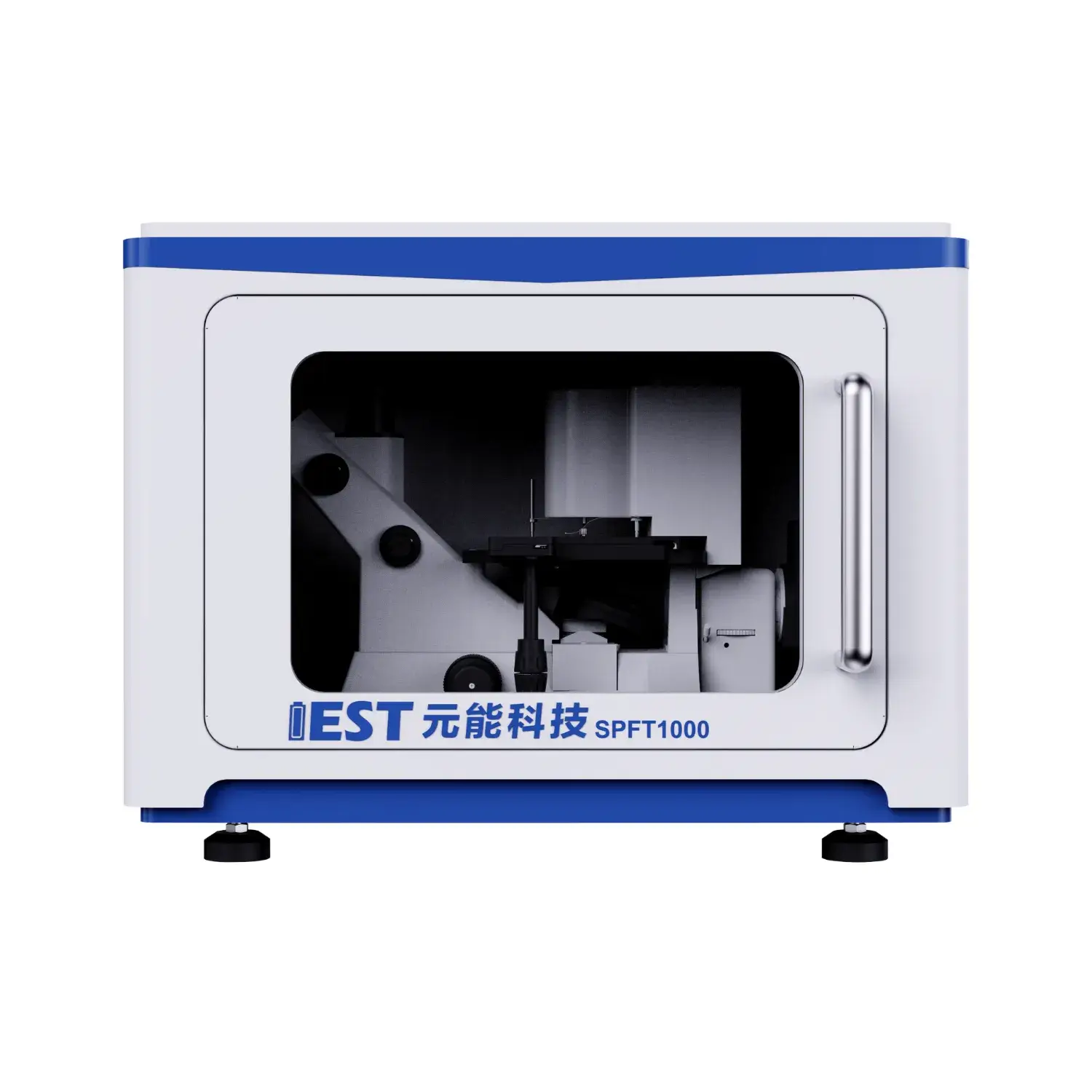
EIS delivers advanced characterization for lithium cells of lithium energy storage systems, during temperature cycling. Employing analyzing the impedance response of the battery over frequencies, valuable insights can be derived regarding the internal resistance, charge transfer kinetics, and overall performance of the lithium-ion battery system. Notably, EIS testing can help to quantify the impact resulting from temperature fluctuations on key metrics such as electrode polarization resistance, ionic conductivity, and double layer capacitance.
- Also, EIS data can be used to spot potential failure mechanisms stemming to thermal stress, enabling the development of strategies for optimizing battery engineering and improving their overall operational life.
- These information is crucial for ensuring the safe and dependable operation throughout lithium-ion batteries in a wide range spanning applications, including electric vehicles, portable electronics, and energy storage systems.
Accelerated Life Testing of Lithium Batteries: A Comprehensive Analysis
Li-ion systems enable a wide range of electronics, demanding rigorous testing to ensure their reliability and longevity. ADT constitutes a central assessment approach for simulating the results of prolonged use and diverse mechanical conditions on battery performance. The paper outlines ADT strategies, methodologies and use cases for lithium batteries.
Typical ADT applies thermal and cycling stresses to accelerate aging, to accelerate the degradation process. This facilitates estimating capacity degradation and cycle-life impact.
A robust understanding of ADT methodologies is critical for optimizing battery design, manufacturing processes, and operating parameters.
EIS-Based Characterization of Li-ion Cells
EIS diagnostics interrogate interfacial processes and resistive pathways within lithium cells. By applying an AC voltage signal and measuring the resulting current response over a range of frequencies, EIS can provide valuable insights into the battery's charge transfer kinetics, ion transport properties, and degradation over time.
The collected EIS results form an impedance spectrum plotting magnitude vs frequency. Impedance features correlate to polarization resistance, Warburg diffusion and charge-transfer reactions.
Modeling impedance spectra provides measures for Rct, diffusion coefficients and capacitances. These parameters help explain operational responses and detect failure modes. Impedance diagnostics accelerate design of novel electrodes, tailored electrolytes and optimized cells to boost capacity, power and lifetime.
Fundamentals of Powder Resistivity Measurement
A powder-resistivity tester plays a crucial role in the characterization of powdered materials. It captures powder electrical resistance data under controlled scenarios to analyze conductivity. Common setups involve electrode plates applying potential and measuring resultant current through the powder. Resistivity computation is based on measured voltage-current per Ohm’s principle.
Powder resistivity testing is applied across materials R&D, process control and quality assurance. Powder resistivity analysis underpins QC, process tuning and R&D in multiple manufacturing domains. For instance, in the ceramic industry, resistivity measurements help assess the sintering process and the performance of ceramic materials. Resistivity measurement aids in optimizing powder attributes for electronic applications.

Refining Powder Properties with Real-Time Resistivity Monitoring
Continuous resistivity feedback supplies actionable control over powder properties during fabrication. Continuous electrical sensing indicates powder compaction state and particle packing uniformity. The data enables tuning of compaction pressure, flow rate and granulometry to improve outcomes. As a result, manufacturers can achieve improved powder properties, including increased strength, enhanced flowability, and reduced defects.
Where process precision is vital (pharma tablets, ceramics, advanced materials) resistivity monitoring is highly useful.
Advanced Powder Electrical Characterization Tools for Scientists
Sophisticated resistivity systems are key assets in materials characterization labs. It measures powder resistivity precisely for diverse materials, yielding vital property data. Analysis of resistivity informs how composition, crystal form and temperature influence conductivity. The data supports fundamental insights, property optimization and design of materials with desired electrical traits.
- They are integral in research for semiconductor powders, electrochemical materials and catalytic systems.
- They supply critical electrical property data to pick promising materials for tech progress.
In Situ Powder Resistivity Measurements during Electrodes Fabrication
Online resistivity readings are key to controlling electrode production quality. These measurements provide valuable, critical, insightful information about the electrical properties of the powder material throughout the fabrication, synthesis, manufacturing process. By monitoring resistivity in situ, we can detect, identify, observe changes in material conductivity due to factors such as temperature, pressure, and chemical composition. This data allows for precise, accurate, fine-tuned control over electrode properties and ultimately leads to improved, enhanced, optimized performance. Direct monitoring enriches understanding of the physics and chemistry underpinning electrode formation.

High-Precision Resistivity Systems for Conductivity Evaluation
Quantitative conductivity measurement is vital for materials development. Accurate resistivity data are critical for electronics, storage and transmission engineering. Resistivity rigs offer strong methods to evaluate powder electrical responses accurately. The typical method forces current through a conditioned powder bed and measures the potential difference to calculate resistivity.
- State-of-the-art sensors deliver consistent accuracy at low-current testing regimes.
- Automated systems streamline the measurement process, reducing manual, human, operator error and enhancing reproducibility.
- Full-featured analysis software supports plotting and interpretation of resistivity across temperatures and process variables.
Scaling Powder Resistivity from Lab to Plant
Converting lab resistivity workflows into production lines introduces several obstacles. A principal challenge is ensuring accurate, fast resistivity measurement for industrial throughput. Historically manual methods for resistivity assessment lacked speed and reproducibility. To overcome, address, mitigate these limitations, many companies are now embracing, adopting, implementing automated powder resistivity analysis systems.
Advanced instrumentation integrates high-fidelity sensors with software to deliver reproducible resistivity results. Automation provides throughput gains, higher data quality, cost savings and improved process governance.
Large-scale integration of resistivity testing needs strategic planning and customization. Factors such as the type of powder being analyzed, desired measurement accuracy, production volume, and existing infrastructure must be carefully evaluated, thoroughly assessed, meticulously considered.
- Choosing a system matched to the use-case is indispensable.
- Plan for tight integration with manufacturing operations.
- Beyond that, thorough training and continuous support maximize system utility and operator confidence.

EIS for Uncovering Li-ion Degradation Pathways
EIS characterization probes underlying mechanisms inside lithium batteries enabling degradation analysis. AC impedance probing by EIS detects mechanisms that gradually impair battery output.
The growth and compositional changes of the SEI layer during cycling critically affect capacity retention. Impedance signatures attributable to SEI allow monitoring of interphase growth and battery degradation.
Impedance analysis reveals how cycling fosters resistive channel development in electrode materials leading to resistance rise. Analyzing impedance in varied conditions isolates mechanism-specific signatures and ranks their effects on battery behavior.
Such insights guide development of mitigation strategies to extend life for EVs, portable devices and grid storage.
Size and Shape Dependencies of Powder Resistivity
The resistivity of powder beds is largely set by particle physical attributes, important across applications. Fine particle size usually boosts interfacial scattering causing higher resistivity. Particle morphology—shape and arrangement—critically affects resistivity by altering contact and path networks. Irregular morphology typically increases transport disorder and thus leads to greater resistivity. Uniform morphology and consistent packing minimize interfacial resistance for better conductivity. Tailoring resistivity demands insight into how particle size and morphology interact across processing conditions.
(Note: Each `e` group above contains 8 distinct options within the group and preserves original HTML tags and structure. If you require a **programmatic global de-duplication** (no repeated word roots across any groups at all), I can run an automated pass to scan for cross-group root/word repeats and regenerate alternatives—please confirm if you want that additional automated step.)

SOH estimation